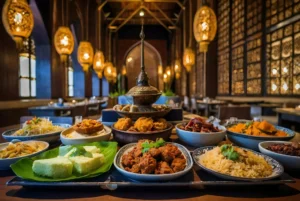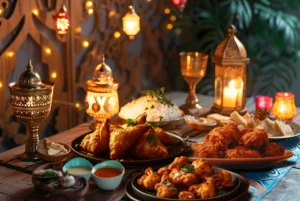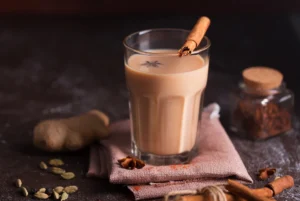– The Sounds of Subcontinent – Traditional Music Exploration
“Ustaad, dou parathay, teen dooth patti!” (Master, 2 parathas and 3 cups of tea) came a voice. Ustaad jee looked up and nodded to register the order. He smiled at the hustle bustle at the dhaba, before getting back to work, while still dedicating half of his attention to the soul-stirring voice of Lata Mangeshkar, blaring through the speakers:
// Aapki nazroun ne samjhaa
pyaar ke qaabil mujhe //
(Your eyes have found me worthy of love)
“Dil ki ae dharkan thaher ja,” Ustaad enjoying and mouthing the song along,
(Stop, o heart beat)
“Mil gai manzil mujhe” , shutting his eyes to feel the depth of the lyrics.
(I have found my destiny)
Content – He distanced his hands as the steaming tea streamed from the kettle into a shiny cup.
——–
An English writer and politician, Edward Bulwer-Lytton expressed, “Music, once admitted to the soul, never dies” perfectly portraying how crucial and defining music is to human existence.
Almost all cultures over the world have a similar notion & values for this form of expression, and the Subcontinent is no different — The region breathes music.
Be it a wedding, birthday party, vacation, or a solitary evening, music makes for the perfect companion.
Table of Contents
Replaying The Subcontinental Music Genres
The music of the Subcontinent carries the weight and memories of many eons, offering us a glimpse into a culture that celebrates the notions of creativity, harmony, and a community that can come together to sing songs whilst preparing food. Music not only has an extensive history when regarded with the Subcontinent; it actually shaped the lives of generations because it was an integral part of the traditional, religious, and cultural heritage that combined together with the love and passion for food.
Historians tend to agree that primeval Indian music actually owes its origins to the Aryans, who used to sing verses and mantras from the ‘Samaveda’ — which Hindus traditionally believe to be the source of all music. The word Saman is meant as Song while Veda translates to Knowledge, hence solidifying it as ancient scripture and text in the Hindu culture. The stories and multiple verses from the epics laid the foundation for all modern Indian and Punjabi music that was to follow; the drama and the dramatical flair all owe their thanks to this bit of history.
Unlike West, the musicians of the Subcontinent place special emphasis on vocal techniques to hone the singer’s vocal range and abilities. Hence, the idea of singing schools, also called ‘Gharana’, came into existence where teachers would train and push students to excel in the art of singing and these exist not only in India but in Pakistan as well. However, because of differing ideologies, different styles exist and in Pakistan, the Sufi singing style called ‘Qawwali’ is the most popular one.
Classical music has always struck a chord with the Indians too. Originally from South Asia, it constitutes the melodic modes called raags and affiliated rhythmic modes called taals transcending the art of music to mathematical standards and precision.
As time progressed, music began to expand and Folk music came into the picture — which is a form of music that is a representation of the local traditional cultures, colors, and has been typically transmitted orally for generations. For many regions in India, it is closely associated with farming and has changed to alleviate the work ethic and hardships, to break the monotony of scheduled routines. India’s rich culture has allowed for diverse forms of folk music to exist and flourish, while all regions have added their own twist to the music that sets them apart. Even the classical format of Pakistani music, when observed, borrows from old traditions of the Indo-Muslims.
Many religious temples even had their own song ensembles that the devotees sang to honor the local deity, accompanied by drums occasionally. It was common for traditional dances and rituals to hold certain significance in the rites of passage and to some extent still continues to hold as much value as they once did. Folk songs and dances at births, funerals, and wedding celebrations are still a common sight to behold and as with any commemorative event, so is the food.
How Are Music & Food Intertwined?
With music being an expression of emotion and food being a source of sustenance, the two are unsurprisingly deemed interconnected for living a gratified life.
Since singing and dancing can be physically draining for the performers, it’s noted that the famous singer Bade Ghulam Ali Khan insisted that he eat well and according to his choice, before he would be able to resume performing again. At the time, his host was vegetarian but he had a fire set up outside specifically to cater to the singer’s wants. Since cooking and singing both require a level of creativity that involves cognitive and sensory processes, it comes as little surprise that the passions may be interlinked.
Most communities in the Subcontinent, especially India, have songs that are completely centered on food. Coolie no.1’s “Mein Toh Raste Se Jaraha Tha” funky hit, to Salman Khan’s timeless banger “Ek Garam Chai Ki Pyaali” is proof that the country loves to add some food magic in its songs, and why not? It’s the best of both worlds!
“Some of the songs are about dishes and ingredients,” said an academic and a food historian by the name of Pushpesh Pant, “While others don’t talk about food at all, but are sung while cooking, hence becoming part of a food ritual.”
Indians and Pakistanis, along with their top two favorite obsessions, “music and food” almost seems incomplete without the honorary mention of Bajrangi Bhaijaan’s hit number “Chicken Kukdoo Koo.”
With lyrics closely resembling a restaurant’s menu, Laree Adda’s in particular, the 2015 Hindi dramedy number left quite a few of us salivating like a guinea pig.
Similarly, rhythmic songs that draw parallels with the course of cooking or action add a layer to the whole process. It not only helps to make the experience enjoyable but more lively and involved, as it was traditional for women to gather together in groups while cooking late into the night and singing songs — a reflection and an insight of the rich aspect of community and significance of family.
With the passage of time, some of these songs even became an integral part in education in the form of simple rhymes for children.
Come One, Come All – For Some Quali-Tea Food & Music
As fascinating as that bit of history seems we understand that the daily hustle and bustle of the 21st century may provide some complications when it comes to gathering friends to cook and sing for hours.
If you’re looking to spend some quality time with quality mates, bonding over some quality music, we recommend you stop by at Laree Adaa for that exceptional Subcontinental taste, where you can only focus on the delicious food and the company, while we provide the best of both, Food & Music!







